Summer 2023 | The Lapenta internship invites undergraduate (sophomore and junior) as well as graduate students from all STEM disciplines (marine science, atmospheric science, engineering, social science, applied math, etc) to participate in 10-week (early June to mid August) projects that span all five line offices and the Office of Marine and Aviation Operations. These projects are high-impact, short-term research-to-operations (R2O) efforts where students learn coding and networking side-by-side… Read More
Software Release: METplus v5.1 Coordinated Release

2023-08-01 | The DTC is pleased to announce the release of the multi-component verification framework called the enhanced Model Evaluation Tools (METplus), or METplus. METplus contains a suite of Python wrappers and ancillary scripts to enhance the user's ability to quickly set-up and run MET. METplus also has an analysis suite including METviewer and METexpress user interfaces and METdataio, METcalcpy, and METplotpy as shared packages for loading and storing MET output as well as aggregating and… Read More
PROUD Award - Excellence in Action: Kate Fossell, Associate Scientist IV, NCAR/MMM and DTC
Performance Recognition for OUtstanding DTC achievements (PROUD) Award
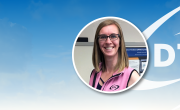
2023-08-21 | Kate Fossell is an Associate Scientist IV in MMM at NCAR, contributing to two DTC projects; the Unified Post Processor (UPP) and the Numerical Weather Prediction cloud container projects. Kate has worked with the DTC for 10 years with much of her time dedicated to co-leading the UPP project and its growing team through its transition to the Earth Prediction Innovation Center (EPIC) in 2023. During this period, she built a strong collaborative relationship with the UPP team at the NOAA Environmental Modeling Center (EMC),… Read More
Lead Story: CCPP Goes Operational
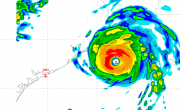
Spring 2023 | The Hurricane Analysis and Prediction System (HAFS) v1 has been approved for operational implementation for the 2023 hurricane season by NOAA NCEP and, with it, the Common Community Physics Package (CCPP) will be deployed operationally for the first time. This is a major milestone for this software infrastructure. The first set of requirements for the CCPP was established in 2017, following… Read More
Director's Corner: Jennifer Mahoney
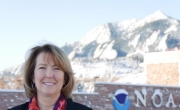
Spring 2023 | The DTC serves a vital role in advancing NOAA’s modeling efforts and the community-based Unified Forecasting System (UFS). The DTC is research to operations (R20) and operations to research (O2R) in action. Through model evaluations and support to the community, the impact of the DTC in the delivery of new… Read More
Who's Who: Xia Sun
Spring 2023 | Xia Sun is a numerical weather prediction (NWP) scientist working at the Cooperative Institute for Research in Environmental Sciences at the University of Colorado Boulder (CIRES) and NOAA Global Systems Laboratory. Xia works on hierarchical system development for the Unified Forecast System (UFS) and MYNN-EDMF planetary boundary layer (PBL) physics scheme. Before that, Xia lived in Reno, Nevada for three and… Read More
Bridges to Operations: Initial Operational Implementation of the UFS Hurricane Application
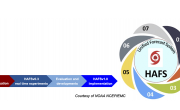
Spring 2023 | The initial operational implementation of the Hurricane Analysis and Forecast System (HAFS) for tropical cyclone (TC) forecasting was recently approved for operations by the NOAA National Centers for Environmental Prediction (NCEP) Central Operations (NCO) in advance of the 2023 Atlantic basin hurricane season. HAFS is the operational instantiation of the Unified Forecast System (UFS) hurricane application, with a focus on transitioning TC modeling research to operations. HAFS is an… Read More
Community Connections: A Forward-looking Virtual Get-together of the CCPP Community

Spring 2023 | As the Common Community Physics Package (CCPP) heads toward operational status within NOAA’s numerical weather prediction (NWP) advancement efforts, the community that helped make it a reality will gather virtually alongside the “CCPP-curious” for the CCPP Visioning Workshop on August 15-17 to discuss plans for its continued improvement over the next 5-10 years. A strong emphasis for the workshop will be placed on accommodating the software coupling needs of the next generation of… Read More
Did you know?: METplus Advanced Training Series Focuses on High Impact Events and Subseasonal to Seasonal Prediction
Spring 2023 | The METplus team offered three sessions of an advanced training series during Spring 2023 and plans to add three to four new sessions during Fall 2023. The intent was to extend beyond the Basic Training Series provided during the winter and spring of 2021/2022. The recorded Basic series and report about the sessions can be found at METplus Training Series… Read More
PROUD Award - Excellence in Action: John Opatz, Associate Scientist III, RAL/NCAR
Performance Recognition for OUtstanding DTC achievements (PROUD) Award
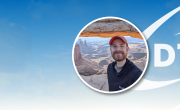
2023-05-17 | John Opatz is an Associate Scientist III in RAL at NCAR contributing his expertise to two DTC projects: the Enhanced Model Evaluation Tools (METplus) and METplus training. John is highly skilled and the go-to scientist for reviewing Pull Requests across METplus repositories. He made 210 METplus GitHub contributions in 2022, defining new issues, committing code changes, updating documentation, and reviewing the work of others. John’s Pull Request reviews are detailed, thoughtful, and comprehensive. He often expands his… Read More
Announcement: DTC - EPIC Hierarchical System Development Survey Now - Deadline Extended
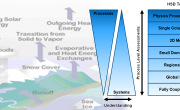
2023-04-11 | All, Developmental Testbed Center (DTC) is working with the Earth Prediction Innovation Center (EPIC) to establish community requirements for a Hierarchical System Development (HSD) . This effort is focused on accelerating the rate of improving numerical prediction across scales using the Unified Forecast System (UFS). The requirements will be captured in a white paper. We would like to invite you to provide your input via this survey. The goal of the survey is to identify: What gaps you feel exist in the UFS HSD… Read More
Announcement: METplus Advanced Training Series

2023-03-10 | The METplus team is pleased to announce that registration for the METplus Advanced Training Series is now open. The training will be 2-hour sessions and will be held virtually in April-May and August-October from 11am-1pm ET / 9am-11am MT / 1600-1800 UTC. The first 3 sessions include: April 19th - Using METplus in the cloud to evaluate UFS protoypes May 3rd - Using METplus to compute S2S diagnostics May 17th - Using METplus to evaluate coupled model components Sessions will be recorded to provide those who cannot… Read More
Lead Story: Using the CCPP SCM as a Teaching Tool
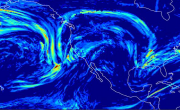
Winter 2023 | The climate graduate programs at George Mason University offer an Earth System Modeling course. The course is divided into two subtopics, theory and practicum. The theoretical session offers lectures introducing students to the physical and dynamical components of an Earth system model, their interactions, and how these components are used to predict the behavior of weather and climate. When I became the instructor of the Earth System Modeling course, I added a module to the practicum session that provides students the… Read More
Director's Corner: Hui-Ya Chuang

Winter 2023 | I was excited when the DTC nominated me to serve on the DTC Science Advisory Board in 2020 and then felt very honored to be asked to become a co-chair in 2022. As one of the first group of EMC staff to be sent to work with DTC on bridging the gap between research and operations, I have watched DTC grow into an organization that accomplished its mission to bridge the gaps, by not only providing community support for several operational softwares, but also facilitating collaboration by developing Common Community Physics… Read More
Who's Who: Mike Kavulich
Winter 2023 | Mike Kavulich grew up in suburban Connecticut, the oldest of three children with a younger brother and sister. From his earliest memories he had an obsession with the weather, giving weather reports to his class in preschool, watching and re-watching weather documentaries recorded from TV on VHS, and tracking hurricanes on a copied paper hurricane tracking map taped to the wooden basement door. Because he did not have cable or internet, he would call his grandmother every day of the late summer to turn on the Weather… Read More
Pagination
Copyright © 2025. All rights reserved.